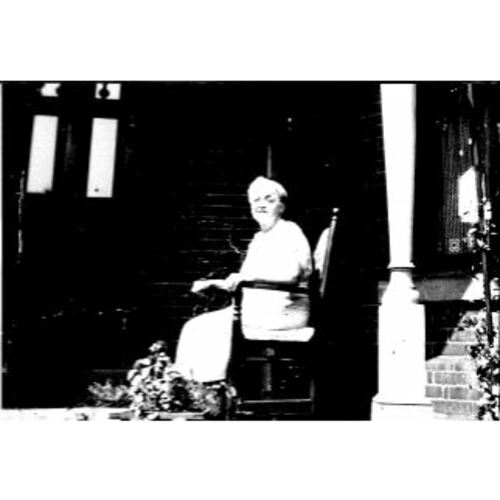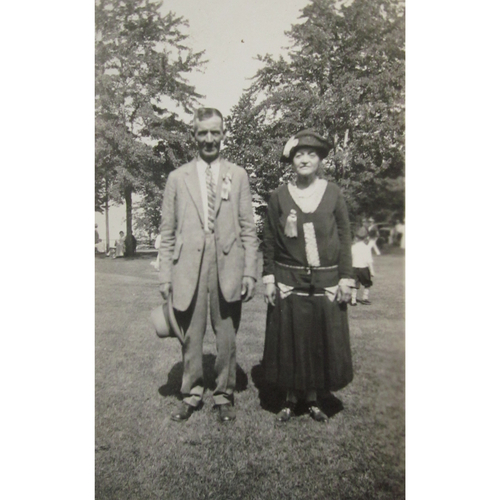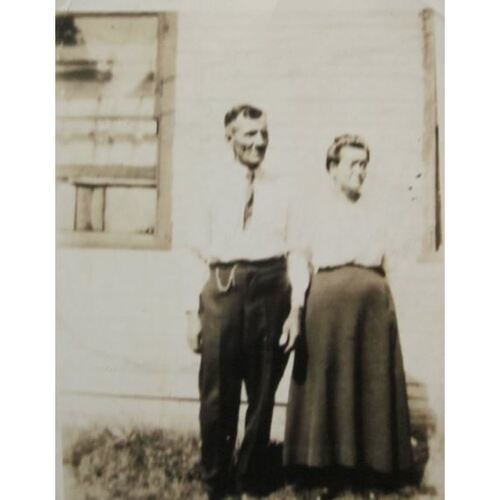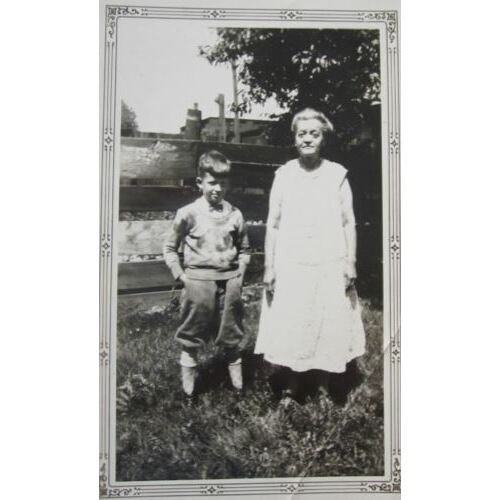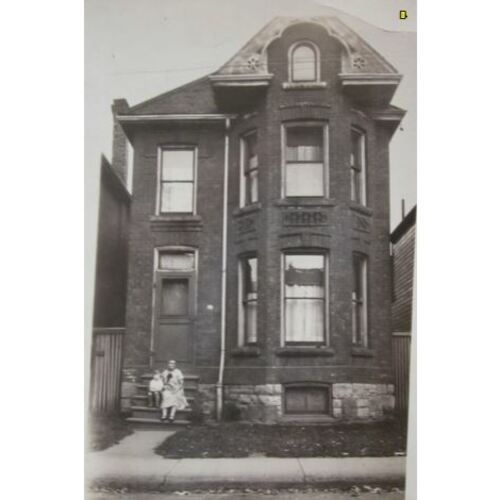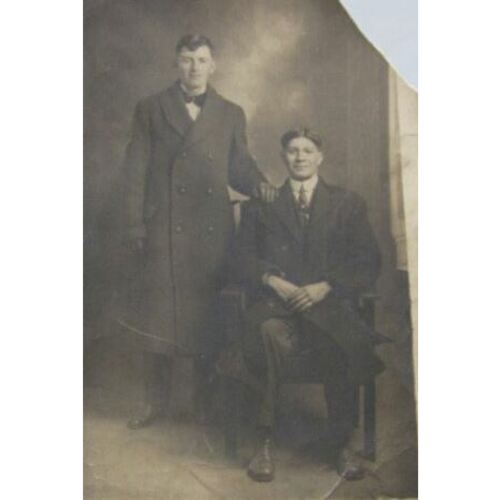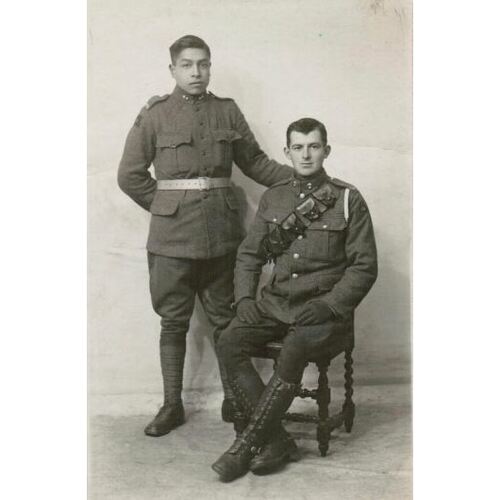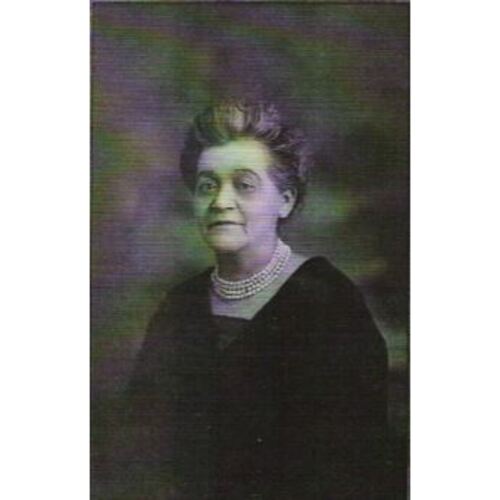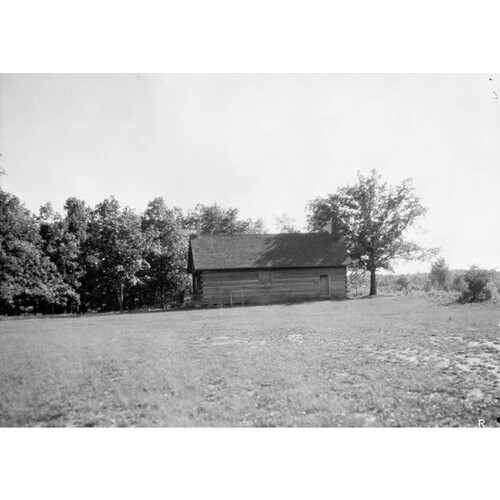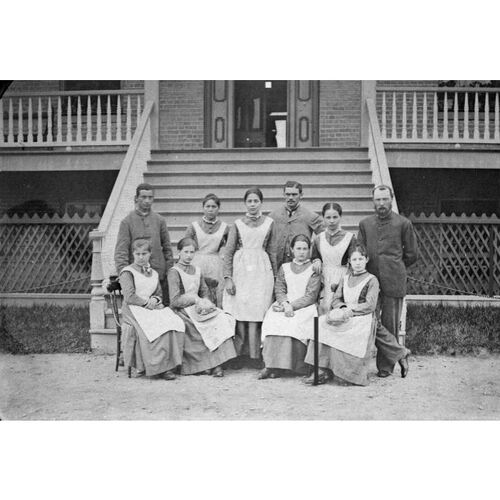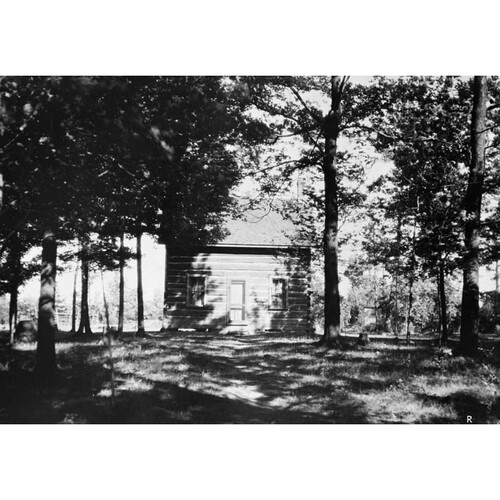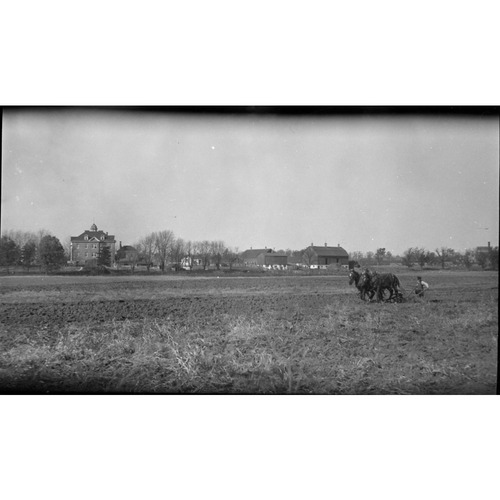
Source: Link
JOHNSON (Johnston), PHOEBE (Feebie, Phebe) ALBERTA (Vanevery; Claus), Tuscarora woman and labourer; b. c. 1869 on the Six Nations Grand River Reserve, Ont., daughter of Elias Johnson and Jemima ———; she had a son whose father is unknown; m. c. 1890 John Vanevery (d. October 1893) on the Grand River Reserve, and they had one son; m. secondly 30 April 1900 Isaac Powless Claus (d. 1956) in Hagersville, Ont., and they had two daughters and a son; d. 31 May 1940 in Hamilton, Ont., and was buried there in the paupers’ section of Woodland Cemetery.
Phoebe Johnson was born on the Six Nations Grand River Reserve in southwestern Ontario. This land, near Brantford, had been set aside for members and allies of the Six Nations (Haudenosaunee) Confederacy who fled the United States after the American Revolutionary War [see Thayendanegea*]. Phoebe was a member of the Tuscarora, an Indigenous nation that joined the confederacy in 1722 after fleeing North Carolina following a war with English settlers. Her ancestors initially lived near the Oneida in the northeastern part of what would become New York State but relocated to Fort Niagara after an American army destroyed their village in August 1779 [see Kaieñˀkwaahtoñ*]. Over the next decade many Tuscarora settled near Lewiston, N.Y., in an area formally established as a reservation for them in 1797. It is likely that Phoebe’s great-grandmother, whose anglicized name was Catherine Big Williams, was born there in 1789.
With the completion of the Erie Canal in 1825 [see Alfred Barrett*], members of the Tuscarora and other Six Nations were pressured by the American government to move west. They surrendered their lands in an 1838 treaty (it was later revoked because of the unsavoury methods employed by federal officials to obtain the Six Nations’ consent), and Phoebe’s great-grandparents resettled on the Grand River Reserve in the 1840s.
Little is known about Phoebe’s early years. Like others on the reserve, Phoebe’s parents were farmers. In 1871 they occupied 50 acres, growing food mostly for their own use, such as corn and potatoes, as well as crops for sale, such as wheat. They had one milch cow, but unlike more affluent families they owned only six pigs and no other livestock. With her two sisters, Phoebe helped her mother around the farm, weeding Jemima’s half-acre garden.
Phoebe’s parents died sometime in the 1870s (vital statistics for Indigenous peoples were rarely registered in Ontario’s records). The Six Nations Council appointed a guardian, John Anderson, and she was placed in the Mohawk Institute, a residential school in Brantford. According to her descendants, Phoebe worked as a domestic servant after graduating, possibly in Hamilton or Buffalo, N.Y. By 1890 she had left domestic service and moved back to the Grand River Reserve. Pregnant, she married John Vanevery and gave birth to a son, Clinton, whose daughters would never learn if he knew who his father was.
Vanevery, a member of the Lower Cayuga, was a widower with a son and two daughters. His first wife, Maria, had died, possibly from tuberculosis. Vanevery was 57 years old, Phoebe 21. Such disparity in age between spouses was not unusual; widowers often wed younger women.
In May 1892 Phoebe gave birth to another son, Harvey. The next year Vanevery died. Though he left the house to Phoebe in his will, he bequeathed the land to his four biological children. Vanevery also named Phoebe as the guardian of his two underage children. Vanevery’s elder son, also named John, contested his father’s will. This led to a formal investigation focusing on whether John should receive a greater share of the harvest from his father’s wheat field. The inquiry soured Phoebe’s relationship with her stepchildren. In 1894 she relinquished guardianship of Vanevery’s younger daughter, and by the spring of 1896 she was living with her sons at the Tuscarora reservation near Lewiston. She continued to move between the Grand River Reserve and New York State over the next several years. Cross-border travel was common among her people as there were Six Nations reservations in western New York and most Grand River people had relatives and friends in the state.
Phoebe struggled to support her sons, and in May 1896 she travelled to Lockport, a town east of Lewiston, where she left them at the Niagara County Poor-house. Clinton and Harvey were transferred to the Home for the Friendless, a Protestant orphanage founded to house widows and their children during the Civil War. The boys remained there for the next four years. It was not uncommon for people in difficulty to temporarily surrender their children to orphanages. Canada’s federal Indian Act of 1876 determined Indian status through the father. The legal status of Phoebe’s children made it difficult to send them to the Mohawk Institute or to the Thomas Asylum for Orphans at Cattarugus, N.Y. Clinton, whose father was likely white, was not legally an Indian or a member of the Six Nations. In addition, because his parents had not been married, he was considered illegitimate. This predicament was not unusual; many children at Grand River were born to women not married according to Christian norms. Children with non-Indigenous fathers were also common. Between 1869 and 1906 the Six Nations Council at Grand River extensively discussed how to reconcile their matrilineal society with the patrilineal Indian Act.
As was common, Phoebe apparently paid to keep her children at the orphanage. In August 1898 she sent a letter from Sanborn (Buffalo), N.Y., to Indian Agent Edwin Duncan Cameron at Grand River stating that she had been sick and unable to work: “Blood poison is my case have not been able to earn this summer have been in the hospital here have failed in supporting my children would like you to do me a favor by letting me have $10.00 until this falls payment you can take that out of my pay for I need it very bad would like to come home when all settled here.” Cameron recommended that she receive the money, which was taken from the funds distributed twice yearly to members of the Grand River Reserve. The accumulated interest, held in trust, came from the government-engineered sale of Six Nations lands. The reserve, which amounted to some 675,000 acres when promised by Sir Frederick Haldimand* in 1784, had been reduced by 1847 to about 55,000 acres.
Phoebe married Isaac Powless Claus in April 1900. They shared similar backgrounds: Claus, a Mohawk and fellow member of the Grand River community, was a widower who had also lived occasionally in New York State. Though wed in a Methodist church in Hagersville, Phoebe and Isaac were recorded as residents of Lewiston, N.Y. A year after their marriage they were living in Grand River along with Clinton and his half-brother, Harvey, both of whom Phoebe had removed from the orphanage. They resided on the 2nd Concession, on the acreage that Harvey had inherited from his father, John Vanevery. Phoebe and Isaac had three children between 1899 and 1905. Just how they were able to support their growing family is unknown; by 1904, 14-year-old Clinton had left home after an argument with Isaac.
After the early 1900s there are only occasional references to Phoebe in the Department of Indian Affairs records. In April 1902 the Six Nations Council approved the “Quit Claim for Isaac Claus and Mrs Phebe Claus.” A record concerning Phoebe appears in 1907 regarding a dispute over whether Harvey had an interest in the land that his two half-sisters had inherited from their father. Both women had died, their elder brother John inheriting the property. Phoebe, who believed that Harvey deserved half the inheritance, contested the decision. The Six Nations Council sided with John, arguing that the Ontario Estates Act of 1897 lacked provisions for half-blood siblings. John Douglas McLean, the assistant deputy superintendent and secretary of the Department of Indian Affairs, overruled this decision, a not uncharacteristic action; although the council usually operated independently of government, on important legal issues the secretary and his officials, such as Francis Pedley*, often intervened.
In October 1910 Phoebe sold Harvey’s land to Clinton (who had married two years earlier) and left Grand River with Isaac and the three younger children. They stayed with her cousins in Lewiston. The following year Phoebe’s family was living on the broken front concession in East Flamborough Township, along the shore of Burlington Bay (Hamilton Harbour). There they remained, renting farmland, until at least June 1913. The family’s exact location afterwards is unknown.
Phoebe is next mentioned in the historical record in September 1916, when Clinton enlisted in the Canadian Expeditionary Force during the First World War. His attestation papers note that the post office closest to where she and Isaac were then living was in Hagersville, a village adjacent to Oneida Township, where Clinton owned reserve land.
Clinton departed Canada in April 1917. As the parents of an enlisted soldier, Phoebe and Isaac received a portion of his monthly pay while he was overseas. The money was likely used to support their family. When Clinton returned to Canada in May 1919, Phoebe and her family were living in the working-class north end of Hamilton.
Phoebe, Isaac, and their three younger children were enfranchised that same year through federal legislation that made it easier for Indigenous people to relinquish their Indian status in exchange for citizenship and monetary compensation [see Frederick Ogilvie Loft]. A letter from the superintendent-general of Indian Affairs, Arthur Meighen*, stated that henceforth Phoebe’s family would “no longer be deemed Indians within the meaning of laws relating to Indians.” Enfranchisment entitled them to a buyout from the Six Nations’ trust fund amounting to $865.20 (based on a single share of $173.04).
The enfranchisement papers were completed in Isaac’s name; his action automatically applied to Phoebe and their three children. Some 2,400 people, roughly two per cent of Indigenous Canadians then recognized as status Indians, also enfranchised during the interwar years. What part Phoebe played in the decision is unknown. What is known is that her family was poor. Phoebe likely believed there was more opportunity in Hamilton than on the reserve, where they were subject to an overarching federal bureaucracy and owned little land, and where her children would face difficulty in raising their own families.
According to the 1921 federal census, by June that year Phoebe, Isaac, and their family were living at 83 Oxford Street, a small, two-storey brick house in Hamilton’s north end (it was still standing in the early 21st century). There were at least 219 Indigenous people in the city at this time, the vast majority from the Grand River Reserve. The enumerator who visited Phoebe’s household noted that the family spoke “Indian” and that she and her children and granddaughter were Tuscarora. Isaac was listed as Mohawk. In the case of First Nations families, enumerators had been instructed to identify children according to their mother’s origins, reflecting the tradition common among many Indigenous peoples to determine kinship by matrilineal descent.
After enfranchisement Phoebe largely disappears from the historical record; the only details of her later years come from family recollections. Isaac worked as a labourer in Hamilton but made little money, and he and Phoebe moved from one boarding house to another in Hamilton’s north end for the rest of their lives. At some point, she became blind.
Phoebe died on 31 May 1940. Her elder daughter wrote the obituary that appeared in the Hamilton Spectator: “Ill for a long period of time, Mrs. Phoebe Claus, of the Tuscarora tribe, Six Nations Indians, died this morning at her home, 105 Victoria avenue north. She was a member of the Bible Students’ association and of the Confederation of the Blind.” Prior to Phoebe’s death, the family’s Indigenous origins had been hidden, a common decision in early-20th-century Hamilton.
At least 46 people attended Phoebe’s funeral visitation, among them individuals whose names suggest a Six Nations identity: Clayton and Edith Monture, Gordon Bairfoot, Susan Johnson, and Louise Hill. Their attendance indicates that Phoebe retained connections to her home community and that some urbanized Six Nations people kept in contact after moving to cities.
Like most working-class women of her time, Phoebe Johnson did not have an easy life. What set her apart was her Indigenous identity. She was unmistakably considered “Indian” by society and by a legal framework that made her life harder than it might have been. She experienced loss and dislocation, and she had few opportunities or social connections to improve her condition. The early deaths of her parents, an unwanted pregnancy, marriage to a man 36 years her senior, and his untimely death all rendered her early years difficult. Yet the resilient Phoebe survived.
Whatever the machinations of politicians and policymakers, it was the hope of escaping poverty and building a better future for her children that led to Phoebe’s decision to enfranchise and move her family to Hamilton’s north end. For her and Isaac, the opportunity to relocate was more compelling than remaining a legal “Indian” in early-20th-century Canada. Though Phoebe was now free of invasive federal oversight, urban life came with a price. She and her descendants were separated from their heritage, as were many Six Nations families who chose similar paths in the expectation that their situations would improve. Phoebe’s children and ten grandchildren (several of whom were institutionalized – one at the Mohawk Institute, two at the Hamilton Boys’ Home, and another at the Bowmanville Boys Training School) came to see themselves as white, Christian, and working class, exactly as the government’s policy intended [see Edward Francis Wilson*]. The long-term consequences of enfranchising were uneven: some of her grandchildren probably benefited and had better lives than they would have had on reserve, while for others that was not likely the case. But such judgements are facile; for Indigenous people of early-20th-century Canada the choices, like those Phoebe faced, were never good ones.
Ancestry.com, “New York, U.S., census of inmates in almshouses and poorhouses, 1830–1920,” Clinton Vanevery and Harvey Vanevery, 19 May 1896: www.ancestry.ca/search/collections/1083; “Ontario, Canada, deaths and deaths overseas, 1869–1948,” Phoebe Claus, 31 May 1940: www.ancestry.ca/search/collections/8946; “Ontario, Canada, marriages, 1826–1938,” Phoebe Vanevery and Isaac Powless Claus, 30 April 1900: www.ancestry.ca/search/collections/7921 (all documents consulted 23 May 2023). FamilySearch, “Census, United States, 1900,” Clinton and Harvey Vanevery, Phoebe and Isaac P. Claus: www.familysearch.org/search/collection/1325221 (consulted 18 May 2023). Fold3, “War of 1812, pension files,” William Johnston, service: Pvt Capt Solomon Longport’s or Longfoot’s Co NY Militia: www.fold3.com/publication/761/war-of-1812-pension-files (consulted 6 June 2023). LAC, R233-30-3, vols.49–157, Can. West., dist. Brant (county) (2), subdist. Tuscarora (12): 7; R233-34-0, Ont., dist. Brant (15), subdist. Tuscarora, (e): 8; R233-36-4, Ont., dist. Haldimand (70), subdist. Oenida (e): 7; R233-37-0, Ont., dist. Haldimand and Monck (67), subdist. Oneida (J), div. 6: 3; R233-114-9, Ont., dist. Hamilton West (88), subdist. Ward no.4 (29): 15; RG10-B-3-e-xvi, file 479/37-2-11-160 (Individual case files – Estates – John (Alex) Vanevery Sr. – Six Nations of the Grand River-Upper Cayuga Band – Six Nations Agency); RG10, vol.1975, file 5689 (central.bac-lac.gc.ca/.redirect?app=fonandcol&id=2077816&lang=eng); RG10, vol.2279, file 55902 (central.bac-lac.gc.ca/.redirect?app=fonandcol&id=2077590&lang=eng); RG10, vol.2335, file 67806 (central.bac-lac.gc.ca/.redirect?app=fonandcol&id=2079256&lang=eng); RG10, vol.2767, file 153394 (central.bac-lac.gc.ca/.redirect?app=fonandcol&id=2066948&lang=eng); RG10, vol.2940, file 197395 (central.bac-lac.gc.ca/.redirect?app=fonandcol&id=2069557&lang=eng); RG10-B-3, vol.7241, file 8032-47 (Six Nations Agency – enfranchisement – Claus, J. P.); RG 150, Acc. 1992–93/166, box 1775-25 (central.bac-lac.gc.ca/.redirect?app=pffww&id=104473&lang=eng). Hamilton Spectator, 31 May 1940. Directory, Hamilton, Ont., 1920. The Valley of Six Nations: a collection of documents on the Indian lands of Grand River, ed. C. M. Johnston (Toronto, 1964), 264. Vernon’s farmers and business directory for the counties of Haldimand, Lincoln, Welland and Wentworth for the year 1914, Hamilton, 1914.
Cite This Article
William Craig Wicken, “JOHNSON (Johnston), PHOEBE (Feebie, Phebe) ALBERTA (Vanevery; Claus),” in Dictionary of Canadian Biography, vol. 16, University of Toronto/Université Laval, 2003–, accessed November 21, 2024, https://www.biographi.ca/en/bio/johnson_phoebe_alberta_16E.html.
The citation above shows the format for footnotes and endnotes according to the Chicago manual of style (16th edition). Information to be used in other citation formats:
| Permalink: | https://www.biographi.ca/en/bio/johnson_phoebe_alberta_16E.html |
| Author of Article: | William Craig Wicken |
| Title of Article: | JOHNSON (Johnston), PHOEBE (Feebie, Phebe) ALBERTA (Vanevery; Claus) |
| Publication Name: | Dictionary of Canadian Biography, vol. 16 |
| Publisher: | University of Toronto/Université Laval |
| Year of publication: | 2023 |
| Year of revision: | 2023 |
| Access Date: | November 21, 2024 |


